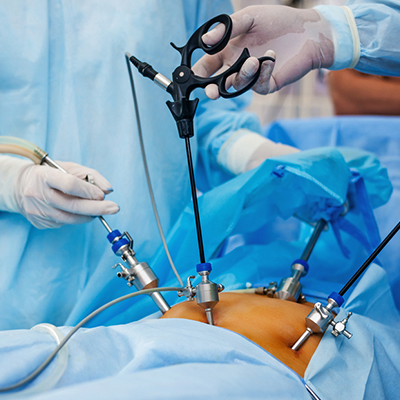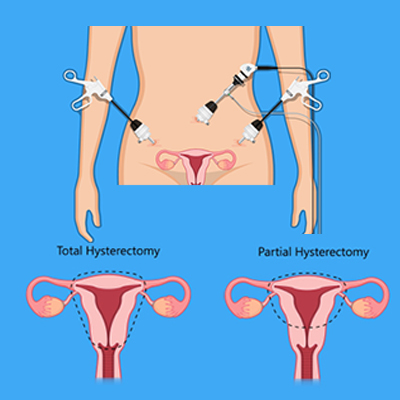Laparoscopy has revolutionized gynecological surgery, offering a minimally invasive alternative to traditional open procedures. This technique involves inserting a thin, lighted telescope (laparoscope) and small surgical instruments through tiny incisions in the abdomen. This allows Gynecologist in Karimnagar to visualize the pelvic organs on a monitor and perform a wide range of procedures with greater precision and less trauma. Common laparoscopic gynecological surgeries include hysterectomy (removal of the uterus), myomectomy (removal of fibroids), oophorectomy (removal of ovaries), treatment of endometriosis, and diagnosis and treatment of ectopic pregnancies. Compared to open surgery, laparoscopy typically results in smaller scars, less pain, faster recovery times, and a shorter hospital stay. While not suitable for all patients or procedures, laparoscopy has become the gold standard for many gynecological interventions, significantly improving patient outcomes and overall quality of life.
Diagnostic laparoscopy

Diagnostic laparoscopy is a minimally invasive surgical procedure widely used in gynecology to visualize the pelvic organs. This allows the Best Lady Gynecologist in Karimnagar to examine the uterus, fallopian tubes, ovaries, and surrounding structures on a video monitor. It's a valuable tool for diagnosing conditions like endometriosis, pelvic inflammatory disease, ectopic pregnancy, ovarian cysts, and infertility causes. Compared to open surgery, it offers smaller incisions, less pain, faster recovery, and reduced scarring. While generally safe, potential risks include bleeding, infection, and organ injury, though these are uncommon. It's often performed under general anesthesia in an outpatient setting.
Surgical Laparoscopy by Best gynecology doctor in Karimnagar:
- Laparoscopic Hysterectomy: Uterus removal
- Laparoscopic Myomectomy: Removal of uterine fibroids while preserving the uterus.
- Laparoscopic Ovarian Cystectomy: Removal of ovarian cysts.
- Laparoscopic Salpingectomy/Salpingo-oophorectomy: Removal of fallopian tubes and/or ovaries.
- Laparoscopic Endometriosis Excision: Removal of endometrial tissue growing outside the uterus.
- Laparoscopic Tubal Ligation: Permanent sterilization by blocking the fallopian tubes.
- Laparoscopic Adhesiolysis: Cutting of scar tissue (adhesions) that can cause pain and fertility issues.

Hysterectomy
A hysterectomy is a surgical procedure to remove the uterus. It is a common gynecological surgery performed for various reasons, including uterine fibroids, endometriosis, uterine prolapse, and certain types of cancer. The surgery can be performed through an abdominal incision, vaginally, or laparoscopically, each with different recovery times and risks. While a hysterectomy effectively addresses many gynecological issues, it also results in permanent infertility and can lead to other long-term effects, including hormonal changes if the ovaries are also removed. Recovery varies depending on the type of surgery, but typically involves a period of rest and avoiding heavy lifting. For more details, contact Dr. Nayani Enjamoori at 9e Fertility.
Types:
- Partial hysterectomy: Removes the uterus but the cervix is left intact.
- Total hysterectomy: Removes the entire uterus and cervix.
- Hysterectomy with salpingo-oophorectomy: Removal of the uterus, one or both fallopian tubes (salpingectomy), and one or both ovaries (oophorectomy). This can be unilateral (one side) or bilateral (both sides).
- Radical hysterectomy: Removes the uterus, cervix, surrounding tissue, and the upper part of the vagina. This is typically performed for certain cancers.
When is hysterectomy suggested:
- Uterine Fibroids
- Endometriosis: A condition where tissue similar to the uterine lining grows outside the uterus, causing pain and bleeding.
- Adenomyosis: A condition where the uterine lining grows into the muscular wall of the uterus, leading to heavy bleeding and pain.
- Uterine Prolapse
- Gynecological Cancers: Such as cancer of the uterus, cervix, or ovaries.
- Abnormal Uterine Bleeding: When bleeding is severe and persistent and not controlled by other methods.
- Chronic Pelvic Pain: If the uterus is determined to be the cause and other treatments have failed.
